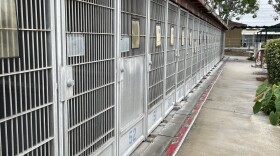San Diegans will see plenty of construction on the freeways in 2011, but there’s even more planning going on behind the scenes.
If you spend any time on the roads around San Diego, you know commutes are only getting more difficult. We live in a region that’s predicted to grow by more than a million people by 2050, so you may be wondering, how are we going to get around if things keep going on this way?
Gary Gallegos, Executive Director of the San Diego Association of Governments, or SANDAG, is very much aware of the challenge. He says in spite of the economic downturn, now is a great time to build roads.
“We are working as fast and as furiously as we can,” said Gallegos, “because we’ve found that this is a very attractive environment to build projects - if you’ve got money.”
Gallegos explains that before the recession hit, sales tax money used to build roads was going up five percent a year, but construction costs were going up twice as fast.
Today, local TransNet revenues have fallen from $250 million a year to about $200 million. That’s a drop of almost 20 percent. But, on the other hand, construction costs have fallen almost 35 percent.
“So, even though we’ve got less money, our money is buying more today,” said Gallegos.
That means the last section of State Route 52 though Santee should be ready to open this spring. $1.4 billion worth of work on Interstate 15 should be done by next year. That will complete the widening of the freeway north of Lake Hodges and south to Mira Mesa.
There is building up in North County to finish transforming Highway 76 from a two-lane country road into a four-lane highway all the way to Interstate 15. And down near the border, 905 will connect the Otay Mesa crossing to the 805 northbound.
People driving the coast along Interstate 5 won’t see much construction this year. That’s because CalTrans is working to wrap up an enormous environmental impact report for its plan to widen the freeway north of La Jolla by six lanes in coming decades.
Of course, not everyone is pleased with this idea. What about public transit?
Gallegos says the freeway widening is only part of the overall plan.
“Not only do we propose to widen I-5,” he said, “We propose to double track the rail line as well.”
Double tracking will allow more trains to run down the coast from Oceanside to downtown San Diego. Gallegos is reluctant to be specific about when all this will happen but, he says, hopefully in less than 10 years.
In the meantime, he predicts work to extend the two carpool lanes up Interstate 5 from Encinitas to Oceanside could get started in the next 5 years.
But Gallegos is thinking much further ahead.
“The big effort in 2011,” he said, “is to update our Regional Transportation Plan.”
That plan has to take into account something no regional transportation plan in California has had to consider before: global warming. The state has given San Diego a goal, and that goal is expressed in terms of individual people, like you and me.
Gallegos says SANDAG’s plan hopes to cut green house gas emissions by 13 percent per person by 2020. By 2035 the number goes up to about 18 percent per person.
That will take some radical shifts in the way we live. Perhaps we’ll chose to accept more dense communities, where it’s easier to get to work, school and shops.
But public transit is suffering from a severe shortage of funding. Gallegos says the region is spending hundreds of millions on upgrading the trolley lines, but he admits bus routes have had to be cut because of budgets.
Bicycling and walking currently make up less than 2 percent of trips. Gallegos says planners are hoping that by building more bike paths, more than 5 percent of people will bike or walk to where they want to go.
“Hopefully,” Gallegos said, “this will be an opportunity to get some exercise. Our strategy has always been to provide San Diegans with choices, competitive choices.”
Gallegos says there will always be the choice of driving alone down the freeway, it will just take longer, or cost more.
So enjoy your drive to work while you can, but perhaps that bicycle you bought for your child this Christmas will prove to be a more prescient present than you thought.






